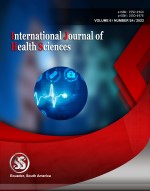Quality risk analysis for sustainable smart water supply using data perception
Keywords:
smart water, chemical, data perceptionAbstract
Constructing Sustainable Smart Water Supply systems are facing serious challenges all around the world with the fast expansion of modern cities. Water quality is influencing our life ubiquitously and prioritizing all the urban management. Traditional urban water quality control mostly focused on routine tests of quality indicators, which include physical, chemical and biological groups. However, the inevitable delay for biological indicators has increased the health risk and leads to accidents such as massive infections in many big cities. In this paper, we first analyse the problem, technical challenges, and research questions. Then we provide a possible solution by building a risk analysis framework for the urban water supply system. It takes indicator data we collected from industrial processes to perceive water quality changes, and further for risk detection. In order to provide explainable results, we propose an Adaptive Frequency Analysis (Adp-FA) method to resolve the data using indicators’ frequency domain information for their inner relationships and individual prediction. We also investigate the scalability properties of this method from indicator, geography and time domains. For the application, we select industrial quality data sets collected from a Norwegian project in 4 different urban water supply systems, as Oslo, Bergen, Strømmen and Aalesund.
Downloads
References
S. Franco, V. Gaetano, and T. Gianni, “Urbanization and climate change impacts on surface water quality: Enhancing the resilience by reducing impervious surfaces,” Water Research, vol. 144, pp. 491–502, 2018.
T. Hak, S. Janouskova, and B. Moldan, “Sustainable development ´ goals: A need for relevant indicators,” Ecological Indicators, vol. 60, pp. 565–573, 2016.
World Health Organization (WHO), Guidelines for drinking-water quality: recommendations. World Health Organization, 2004.
E. Weinthal, Y. Parag, A. Vengosh, A. Muti, and W. Kloppmann, “The eu drinking water directive: the boron standard and scientific uncertainty,” European Environment, vol. 15, no. 1, pp. 1–12, 2005.
R. W. Adler, J. C. Landman, and D. M. Cameron, The clean water act 20 years later. Island Press, 1993.
V. Novotny, Water quality: prevention, identification and management of diffuse pollution. Van Nostrand-Reinhold Publishers, 1994.
A. Hounslow, Water quality data: analysis and interpretation. CRC press, 2018.
S. Yagur-Kroll, E. Schreuder, C. J. Ingham, R. Heideman, R. Rosen, and S. Belkin, “A miniature porous aluminum oxide-based flowcell for online water quality monitoring using bacterial sensor cells,” Biosensors and Bioelectronics, vol. 64, pp. 625–632, 2015.
H. R. Maier and G. C. Dandy, “The use of artificial neural networks for the prediction of water quality parameters,” Water Resources Research, vol. 32, no. 4, pp. 1013–1022, 1996.
H. Orouji, O. Bozorg Haddad, E. Fallah-Mehdipour, and M. Marino, “Modeling of water quality parameters using data- ˜ driven models,” Journal of Environmental Engineering, vol. 139, no. 7, pp. 947–957, 2013.
D. R. Hardoon, S. Szedmak, and J. Shawe-Taylor, “Canonical correlation analysis: An overview with application to learning methods,” Neural computation, vol. 16, no. 12, pp. 2639– 2664, 2004 .
I.T. Jolliffe and J. Cadima, “Principal component analysis: a review and recent developments,” Philosophical Transactions of the Royal Society A: Mathematical, Physical and Engineering Sciences, vol. 374, no. 2065, p. 20150202, 2016.
Srilatha Puli, a machine learning model for air quality prediction for smart cities, design engineering || issn: 0011-9342 | year 2021 - issue: 9 | pages: 18090 – 18104.
Srilatha Puli, n-grams assisted youtube spamcommentdetection, ymer || issn : 0044-0477, april 2022.
Srilatha Puli, analysis of brand popularity using big data and twitter, ymer|| issn : 0044- 0477, april 2022.
Kumar, S. (2022). A quest for sustainium (sustainability Premium): review of sustainable bonds. Academy of Accounting and Financial Studies Journal, Vol. 26, no.2, pp. 1-18
Allugunti V.R (2022). A machine learning model for skin disease classification using convolution neural network. International Journal of Computing, Programming and Database Management 3(1), 141-147
Allugunti V.R (2022). Breast cancer detection based on thermographic images using machine learning and deep learning algorithms. International Journal of Engineering in Computer Science 4(1), 49-56
Srilatha Puli, cyber threat detection based on artificial neural networks using event profiles, the international journal of analytical and experimental modal analysis, issn no:0886- 9367.
Suryasa, I. W., Rodríguez-Gámez, M., & Koldoris, T. (2022). Post-pandemic health and its sustainability: Educational situation. International Journal of Health Sciences, 6(1), i-v. https://doi.org/10.53730/ijhs.v6n1.5949
Srilatha Puli, face mask monitoring system, the international journal of analytical and experimental modal analysis, issn no:0886-9367.
Srilatha Puli, iot based smart door lock surveillance system using security sensors, advanced science letters e-issn:1936-7317.
N. Swapna Suhasini, Srilatha Puli, big data analytics for malware detection in a virtualized framework, journal of critical reviews, issn:2394-5125 vol.7, issue 14, july – 2020.
Dr. Shaik Abdul Nabi, Srilatha Puli, framework for social distance monitoring with computer vision and yolov3, 2nd international conference on iot based control networks and intelligent systems (icicnis 2021), ssrn-id3883372.
Published
How to Cite
Issue
Section
Copyright (c) 2022 International journal of health sciences

This work is licensed under a Creative Commons Attribution-NonCommercial-NoDerivatives 4.0 International License.
Articles published in the International Journal of Health Sciences (IJHS) are available under Creative Commons Attribution Non-Commercial No Derivatives Licence (CC BY-NC-ND 4.0). Authors retain copyright in their work and grant IJHS right of first publication under CC BY-NC-ND 4.0. Users have the right to read, download, copy, distribute, print, search, or link to the full texts of articles in this journal, and to use them for any other lawful purpose.
Articles published in IJHS can be copied, communicated and shared in their published form for non-commercial purposes provided full attribution is given to the author and the journal. Authors are able to enter into separate, additional contractual arrangements for the non-exclusive distribution of the journal's published version of the work (e.g., post it to an institutional repository or publish it in a book), with an acknowledgment of its initial publication in this journal.
This copyright notice applies to articles published in IJHS volumes 4 onwards. Please read about the copyright notices for previous volumes under Journal History.
















